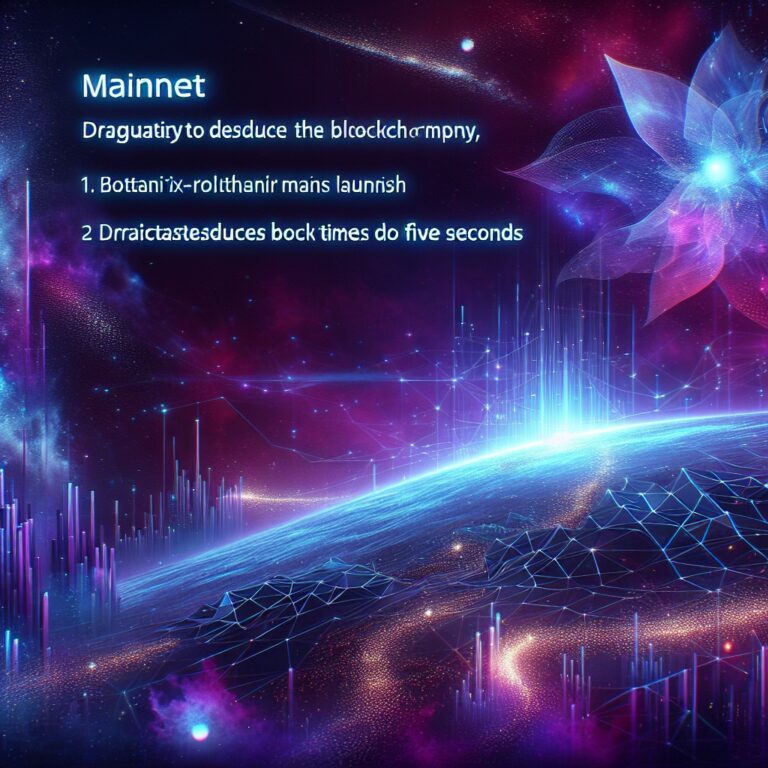In a move shaking up the cryptocurrency landscape, Botanix has launched its mainnet, reducing Bitcoin block times from 10 minutes to a mere five seconds. This development, announced on July 2, 2025, positions Botanix as a key player in the ongoing quest to enhance Bitcoin’s functionality and utility, aligning it closely with its Ethereum counterpart.
Bitcoin’s New Frontier
Botanix is not just another blockchain project; it’s a bold attempt to bridge the gap between Bitcoin’s robust security and Ethereum’s flexibility. By integrating Ethereum Virtual Machine (EVM) compatibility, Botanix allows Ethereum-based applications and smart contracts to migrate seamlessly onto the Bitcoin network. This move is expected to lure developers eager to tap into Bitcoin’s value, which remains unmatched by any other digital asset. For a related perspective on Ethereum’s efforts to boost speed, see Ethereum Developer Proposes 6-Second Block Times to Boost Speed, Slash Fees.
“Here’s the catch,” said Willem Schroé, CEO of Botanix Labs, “If we want a world that runs on Bitcoin, we have to build systems that honor its core principles of self-custody, open participation, and global fault tolerance.” His comments underscore a broader sentiment within the crypto community—a desire to harness Bitcoin’s potential without compromising its decentralized ethos.
A New Era for Bitcoin DeFi
Botanix’s launch isn’t happening in isolation. It joins a cadre of innovative projects like Rootstock, Stacks, and BOB (“Build on Bitcoin”), all leveraging the BitVM computing paradigm. This paradigm is pivotal for making complex computations verifiable on Bitcoin, effectively unlocking smart contract capabilities akin to Ethereum’s. This follows a trend similar to Ethereum’s proposed changes, as detailed in Ethereum dev floats halving slot times to 6 secs, doubling blocks.
The debut coincides with the introduction of Botanix’s Bitcoin DeFi (BTCFi) products. These include Palladium, a BTC-backed stablecoin, and Bitzy, a decentralized exchange. These offerings showcase Botanix’s ambition to create a comprehensive DeFi ecosystem on Bitcoin.
“The expansion of Bitcoin’s utility isn’t just about adding new features; it’s about opening doors,” noted a crypto analyst. “By enabling EVM compatibility, Botanix is transforming Bitcoin from a mere store of value into a dynamic platform for DeFi.”
Decentralization at the Core
Decentralization is at the heart of Botanix’s strategy. The mainnet launch is accompanied by a shift to decentralized governance, managed by a foundation of 16 node operators, including industry heavyweights like Mike Novogratz’s Galaxy Digital and crypto custody firm Fireblocks. This number is expected to surpass 100 by 2026, signaling a robust commitment to distributed control.
Schroé’s remarks resonate with many in the Bitcoin community wary of centralized platforms. “Too many Bitcoiners have been burned by centralized platforms, which is why Botanix is fully decentralized at launch. No single party, including us, can touch a user’s Bitcoin,” he emphasized.
The Road Ahead
The implications of Botanix’s mainnet launch are vast, sparking intrigue and cautious optimism. While its success could redefine Bitcoin’s role in the crypto ecosystem, it also raises questions about scalability and security. Will Bitcoin’s increased utility spur adoption, or will it face resistance from purists wary of altering its foundational principles?
As Botanix forges ahead, the crypto world watches closely. The potential for Bitcoin to evolve into a fully-fledged DeFi hub is tantalizing, yet fraught with challenges. It’s a delicate balance—one that Botanix seems poised to navigate. Whether this heralds a new chapter in Bitcoin’s storied history remains to be seen, but one thing’s for sure: the race to expand Bitcoin’s horizons is on, and Botanix is leading the charge.
Source
This article is based on: Bitcoin Layer-2 Botanix Mainnet Debuts, Cuts Block Times to 5 Seconds
Further Reading
Deepen your understanding with these related articles:
- ZKsync’s Airbender zkVM Proves Ethereum Blocks in 35 Seconds
- Bit Digital falls 4% as it ditches Bitcoin mining for Ethereum
- Robinhood launches layer-2 blockchain for stock trading in Europe

Steve Gregory is a lawyer in the United States who specializes in licensing for cryptocurrency companies and products. Steve began his career as an attorney in 2015 but made the switch to working in cryptocurrency full time shortly after joining the original team at Gemini Trust Company, an early cryptocurrency exchange based in New York City. Steve then joined CEX.io and was able to launch their regulated US-based cryptocurrency. Steve then went on to become the CEO at currency.com when he ran for four years and was able to lead currency.com to being fully acquired in 2025.


